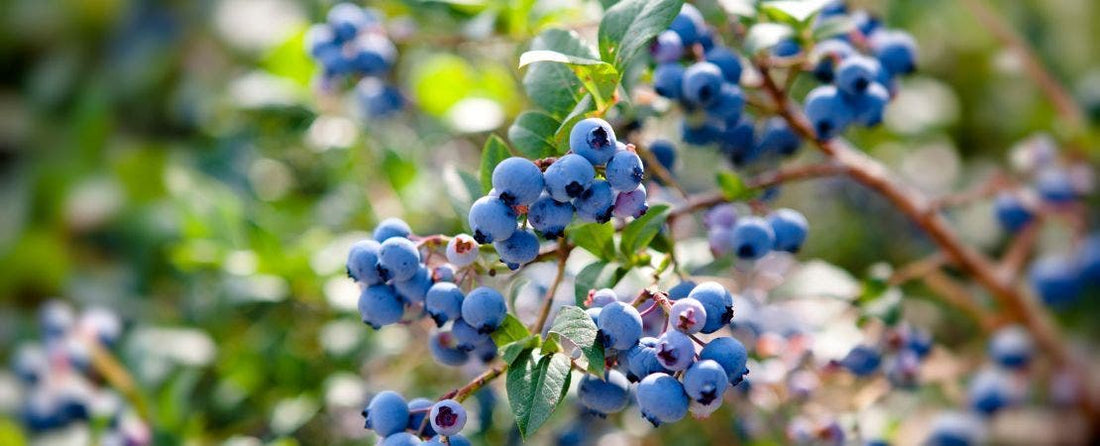
Know Before You Grow: Blueberries
Share
How to Grow Blueberries
Blueberries can be a little finicky and gardeners are always looking for a way to squeeze a bigger, sweeter crop of berries out of their home garden. Armed with a little knowledge, you can consistently produce impressive blueberry crops. Blueberries require a soil pH of 4.5 to 5.5 This is a general guide for growing and caring for most blueberry varieties:
Blueberries Need Their Space
When placing a blueberry bush there are two things that you need to keep in mind: (1) because of their shallow root systems, they don't compete well with trees and other plants, and (2) they prefer full sun. So give them plenty of space when choosing your planting location. Most blueberries are self-pollinating, but planting them in proximity will increase your opportunity for big fruit yields.
Blueberries Need a Specific Soil Environment
Blueberries want more acidic soil, and they want a loose loamy soil that drains well but retains moisture. Many purists suggest preparing the soil months before you ever plant. I recommend planting in raised beds or containers that allow you to have full control over soil composition (this method also avoids the issue of competing with other plants for moisture and nutrients).
The soil should be mostly organic matter, like compost or peat, mixed with sand for drainage. The organic material in the soil also helps to keep the pH down.
Caring for Blueberry Bushes is Easy
They need about an inch of water of week and a yearly pruning after harvest. Beyond that they should mostly take care of themselves.
Fertilizer is a must when growing fruit, but concentrated commercial fertilizers have a tendency to burn up the thirsty shallow blueberry roots. An all-purpose slow-release fertilizer worked into the soil every spring will provide all of the nutrients that your plant needs for the season. If you are into organic gardening compost and earthworms will work great.
Blueberries will usually bloom and fruit in their second year—you may want to pinch off any blooms on your first-year plant to stimulate root development for a bigger fruit crop the next year.
You'll know when your berries are ripe when you lightly run your hand across the clusters—ripe berries will just fall off into your hand.
Return to all Know Before You Grow articles